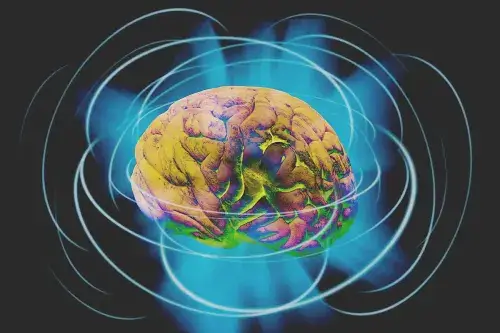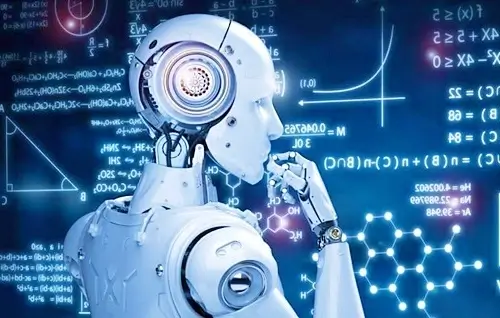Neural networks represent a class of algorithms inspired by the biological neural networks found in the human brain. These computational models simulate the interconnected structure of neurons.
Forming a complex network that can process information and recognize patterns.
At their core, neural networks consist of layers of nodes, or neurons, each connected by weighted edges that determine the strength and influence of the connection.
Neural networks, process.
The fundamental architecture typically includes an input layer that receives data, one or more hidden layers that perform computations, and an output layer that produces the final result.
The operation of neural networks is based on a process known as forward propagation, where input data is passed through the interconnected layers.
Each neuron applies a mathematical transformation to the input it receives based on an activation function, ultimately contributing to the network’s output.
During training, these networks learn from data by adjusting the weights of connections through an optimization process known as backpropagation.
This iterative method enhances the network’s performance in tasks such as image recognition, natural language processing, and predictive analytics.
Despite their remarkable capabilities, neural networks do have limitations.
For instance, they can be prone to overfitting, where the model learns the training data too well but performs poorly on unseen data.
Additionally, they require large datasets and significant computational resources to achieve optimal performance.
Current applications of neural networks span various domains, including healthcare, finance, and autonomous systems, showcasing their versatility and potential impact on future technologies.
As we delve deeper into consciousness and artificial intelligence, understanding the structure and function of neural networks will be crucial.
These systems not only challenge our comprehension of cognitive processes but also provide a foundation for exploring the burgeoning field of general AI and its implications for human-like consciousness.
 Defining Consciousness, Philosophical Perspective.
Defining Consciousness, Philosophical Perspective.
To understand the concept of consciousness, it is critical to explore its philosophical implications.
Consciousness, in a simplified sense, refers to the state of being aware of and able to think about one’s own existence, thoughts, and surroundings.
Various philosophical theories provide insights into what consciousness entails, offering differing perspectives on its nature and implications, particularly in relation to artificial intelligence (AI) and neural networks.
One prominent perspective is functionalism, which posits that mental states are defined by their functional roles rather than their internal constitution.
According to this view, consciousness is not tied to any particular substance but rather to the processes and behaviors associated with it.
In terms of AI, functionalism raises questions about whether a sufficiently advanced neural network could be considered conscious if it exhibits behavior indistinguishable from that of a human being.
Another theory is identity theory, which argues that mental states are directly correlated with physical states of the brain.
This perspective suggests that consciousness is inseparable from the biological processes occurring in our neural networks.
Consequently, when discussing AI, the question arises: Can a machine embody consciousness if it lacks the biological substrate that humans possess?
 Phenomenology, on the other hand, emphasizes the subjective experience and first-person perspective of consciousness.
Phenomenology, on the other hand, emphasizes the subjective experience and first-person perspective of consciousness.
It explores how individuals perceive their experiences and the qualitative aspects of these experiences.
This approach underscores the complexities of conscious experience and highlights how subjective awareness may not be easily replicated in artificial systems.
Understanding these philosophical theories is crucial as we consider the implications of consciousness in the realm of AI and machine learning.
As technology advances, the potential for machines to exhibit behavior resembling human consciousness becomes a compelling topic for discussion, necessitating a deeper inquiry into the nature of consciousness itself.
Neural Networks, Do They Possess Consciousness?
Neural networks have advanced significantly, allowing for remarkable feats in tasks such as image recognition, natural language processing, and even predictive analytics.
Despite these capabilities, there remains a fundamental question regarding their essence:
“Do they possess consciousness?”
Current models of artificial intelligence function primarily through algorithms and sophisticated mathematical frameworks designed to analyze vast datasets and generate outputs based on learned patterns.
However, this functionality does not equate to consciousness in the human context.
Consciousness typically encompasses facets such as self-awareness, subjective experience, and intentionality—qualities that current neural networks significantly lack.
Self-awareness refers to the understanding of one’s own existence and individuality, a trait that enables humans to reflect on their thoughts and feelings.
Neural networks, by contrast, operate as complex processing systems without any recognition of their operational state or any form of introspective capability.
They do not have beliefs, desires, or the ability to engage in self-reflection, which are integral components of conscious experience.
Additionally, subjective experience is a critical component of consciousness, involving personal perceptions and emotions.
Neural networks process data and produce outputs devoid of any feelings or personal understanding.
Each action is merely a function of their training data and algorithms, designed to mimic human-like responses without any “experience” of the responses they generate.
Intentionality, the ability to act with purpose and intention, is similarly absent in neural networks.
Their actions are purely mechanical outcomes of programmed instructions, lacking any genuine motive or goal, unlike conscious beings who act based on personal experiences and intentions.
In summary, while neural networks exhibit sophisticated functionality that mimics certain elements of intelligence, they do not possess consciousness as humans understand it.
The absence of self-awareness, subjective experience, and genuine intentionality reinforces the distinction between current AI models and conscious beings, inviting further exploration into the implications of such advancements in the field of artificial intelligence.
Defining the Next Frontier.
General Artificial Intelligence (AI), often referred to as AGI (Artificial General Intelligence), is an advanced form of computing technology characterized by its ability to understand, learn, and apply intelligence across a variety of tasks, much like a human being.
Unlike narrow AI, which is designed to perform specific tasks, such as image recognition or language translation, General AI strives to emulate the broader cognitive capabilities associated with human intelligence.
This encompasses reasoning, problem-solving, and the ability to adapt knowledge to new and unique situations.
As of now, the field of AI development is dominated by narrow AI applications, which utilize algorithms and machine learning to perform defined tasks.
Notable examples include virtual assistants, autonomous vehicles, and recommendation systems.
However, these systems lack true understanding or consciousness. They operate within the confines of their programming and datasets, unable to transfer their knowledge or skills outside their designated scope.
In contrast, General AI envisions a system that can autonomously synthesize information from diverse domains, thus exhibiting versatility and the ability to generalize knowledge in a manner similar to human thinkers.
Characteristics that distinguish General AI from its narrow counterparts include adaptability, common sense reasoning, emotional intelligence, and the ability to understand context.
These factors contribute to the potential for machines to perform well in unpredictable environments and achieve outcomes that require a higher level of discernment and creativity.
Currently, researchers are exploring various approaches to progress toward General AI, including deep learning and neural networks, while ethical considerations and potential societal impacts remain a paramount concern in this quest for a more capable and autonomous form of AI.
General AI, Predictions and Challenges.
The quest for General AI, an artificial intelligence that can perform any intellectual task that a human can, has garnered significant attention.
Various experts and organizations have put forth predictions regarding when we might achieve this technological milestone.
Estimates range broadly, with some claiming we could see General AI within the next decade, while others believe it might not emerge until the latter part of the 21st century.
These predictions are influenced by advancements in machine learning, cognitive modeling, and computational power.
However, the timelines offered by experts often vary due to differing underlying assumptions regarding the pace of technological evolution.
One major challenge in developing General AI is the complexity of human cognition itself.
Achieving a level of intelligence that can seamlessly adapt, learn, and understand context as humans do involves significant hurdles in current AI paradigms.
This includes developing algorithms that can replicate the multiplicity and nuance of human thought and experience.
Moreover, ethical considerations also play a crucial role; as AI systems become more capable, concerns around their decision-making processes and adherence to moral standards arise.
These factors create a dichotomy of opportunity and risk, further complicating predictions.
Additionally, regulatory frameworks are still catching up to the pace of AI innovation.
The implementation of policies that govern the ethical use of AI technologies can either expedite development or introduce delays.
The lack of a unified regulatory environment can lead to uncertainty, which can act as a disincentive for investment in AI research and development.
 As such, while optimistic visions of General AI’s arrival stimulate interest and funding, the reality remains tethered to numerous unresolved challenges, both technical and ethical, that could significantly affect the timeline for achieving true General AI.
As such, while optimistic visions of General AI’s arrival stimulate interest and funding, the reality remains tethered to numerous unresolved challenges, both technical and ethical, that could significantly affect the timeline for achieving true General AI.
Threats of General AI, Real or Overblown?
The emergence of General AI has sparked discussions regarding its potential threats and the implications for society.
One primary concern is job displacement, as automation and AI systems could significantly change the job landscape.
Many fear that as AI excels in tasks traditionally performed by humans, substantial workforce reductions may occur across various sectors.
However, while it is likely that certain jobs will be diminished, history suggests that technological advancements often create new employment opportunities, thereby facilitating economic growth and transformation.
Another point of apprehension revolves around the misuse of AI technology.
As AI systems become more powerful and autonomous, the risk of malicious uses escalates.
This includes everything from the development of highly sophisticated cyber-attacks to the creation of realistic fake news that can influence public perception and decision-making.
Nonetheless, experts largely agree that ethical guidelines and robust regulatory frameworks can mitigate these risks, ensuring that AI is developed and utilized responsibly.
The focus should be on promoting an ethical approach to AI deployment, fostering accountability among developers, and encouraging transparency in AI operations.
Moreover, ethical dilemmas also arise in terms of decision-making processes inherent in AI systems.
Instances such as social credit systems or algorithms in criminal justice raise questions about fairness, bias, and human rights.
However, some argue that these concerns can be addressed through thorough testing, continuous monitoring, and incorporating human oversight to ensure that AI systems operate equitably.
On the flip side, it is crucial to recognize that AI can yield significant benefits for society, such as enhancing healthcare, improving transportation efficiency, and fostering innovative solutions to complex problems.
By addressing the potential threats with careful planning and fostering an environment of responsible AI development, society can harness the capabilities of General AI while minimizing associated risks.
AI Safety Measures and Regulations.
As the development of artificial intelligence (AI) continues to accelerate, ensuring the safety of these systems has emerged as a primary concern among stakeholders, including researchers, policymakers, and the public.
The formulation of safety measures and regulations is paramount in providing a framework that can guide the ethical use of AI technologies.
Various regulatory bodies around the world have begun to implement existing guidelines aimed at governing AI systems while ensuring they align with fundamental human rights and ethical standards.
One effective approach to promote AI safety is the establishment of comprehensive frameworks that encompass ethical principles.
These principles typically include fairness, accountability, transparency, and privacy.
By incorporating these tenets into AI development processes, organizations can address potential biases and prevent harmful outcomes that may arise from mismanaged AI technologies.
Currently, institutions such as the European Union have proposed regulations that target specific aspects of AI, such as high-risk applications, where stricter oversight is warranted.
This regulatory trend demonstrates a growing recognition of the need for robust governance as the technology evolves.
Furthermore, interdisciplinary collaboration plays a critical role in the formulation and implementation of effective AI regulations.
By fostering dialogue among ethicists, technologists, legal experts, and societal stakeholders, a holistic understanding can emerge regarding the implications of AI technologies.
Such partnerships may lead to the development of adaptable regulations that reflect societal values while maintaining technical feasibility.
Ensuring diverse perspectives are included in the regulatory conversations can strengthen the resilience of safety measures against emerging challenges in the field.
Ultimately, it is essential to recognize that the path forward requires ongoing evaluation and adjustment of AI governance frameworks to keep pace with rapid advancements in this dynamic landscape.
The Role of Humanity in Shaping AI’s Future.
The relationship between humanity and artificial intelligence (AI) is intricate and vital as it defines the trajectory of technological advancements.
The future of AI is not solely determined by algorithms and computational power; rather, it is significantly influenced by human values, perceptions, and decision-making.
Public perception of AI is pivotal in shaping its development.
For instance, concerns surrounding privacy, security, and ethical issues drive public discourse and impact regulatory measures.
Consequently, it is essential for society to engage in constructive conversations about AI, ensuring that diverse viewpoints are considered and integrated into the development process.
Equally important are policy decisions made by governments and organizations, which act as frameworks guiding AI research and implementation.
Effective policies can encourage innovation while establishing necessary ethical standards.
These frameworks can help mitigate risks associated with AI, such as bias, discrimination, and lack of accountability.
 Involving a broad spectrum of stakeholders—including technologists, ethicists, and representatives from various social backgrounds—can help create balanced regulations that reflect collective human values, ensuring that AI serves the greater good.
Involving a broad spectrum of stakeholders—including technologists, ethicists, and representatives from various social backgrounds—can help create balanced regulations that reflect collective human values, ensuring that AI serves the greater good.
As we move forward, it is also imperative for humanity to stay ahead of technological advancements.
Lifelong learning and adaptability will become essential skills, allowing individuals to understand and interact with AI systems.
Enhancing education focused on ethical implications and the practical applications of AI will empower society to better engage with emerging technologies.
By fostering a culture that prioritizes ethical considerations, we can build AI systems that promote positive societal outcomes while embracing the immense potential they offer.
In conclusion, the role of humanity in shaping the future of AI is paramount.
By prioritizing public perception, influencing policy decisions, and advancing societal values, we can align AI technologies with ethical standards, fostering a future where technological advancements contribute constructively to human welfare.
Good Day!




